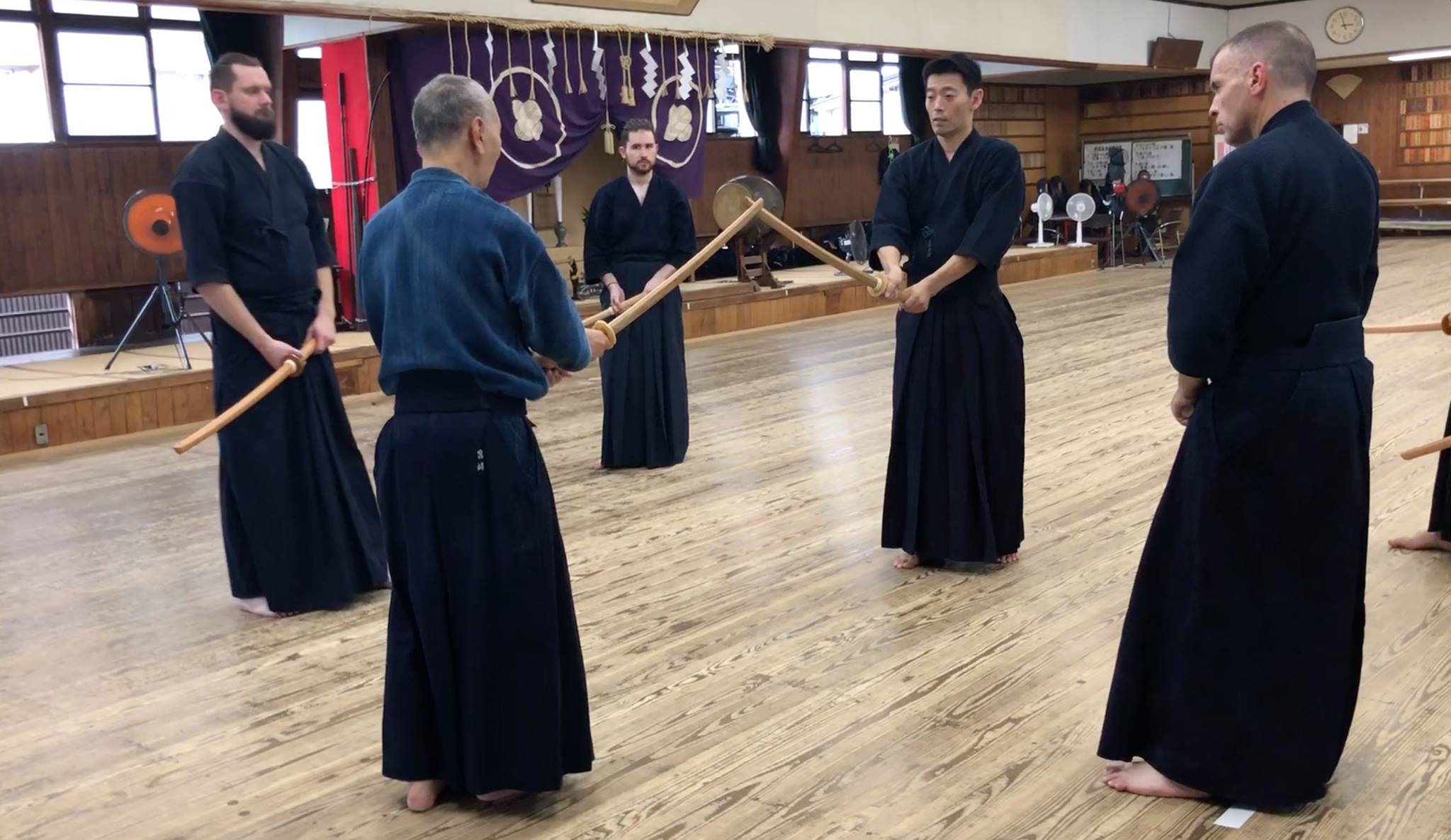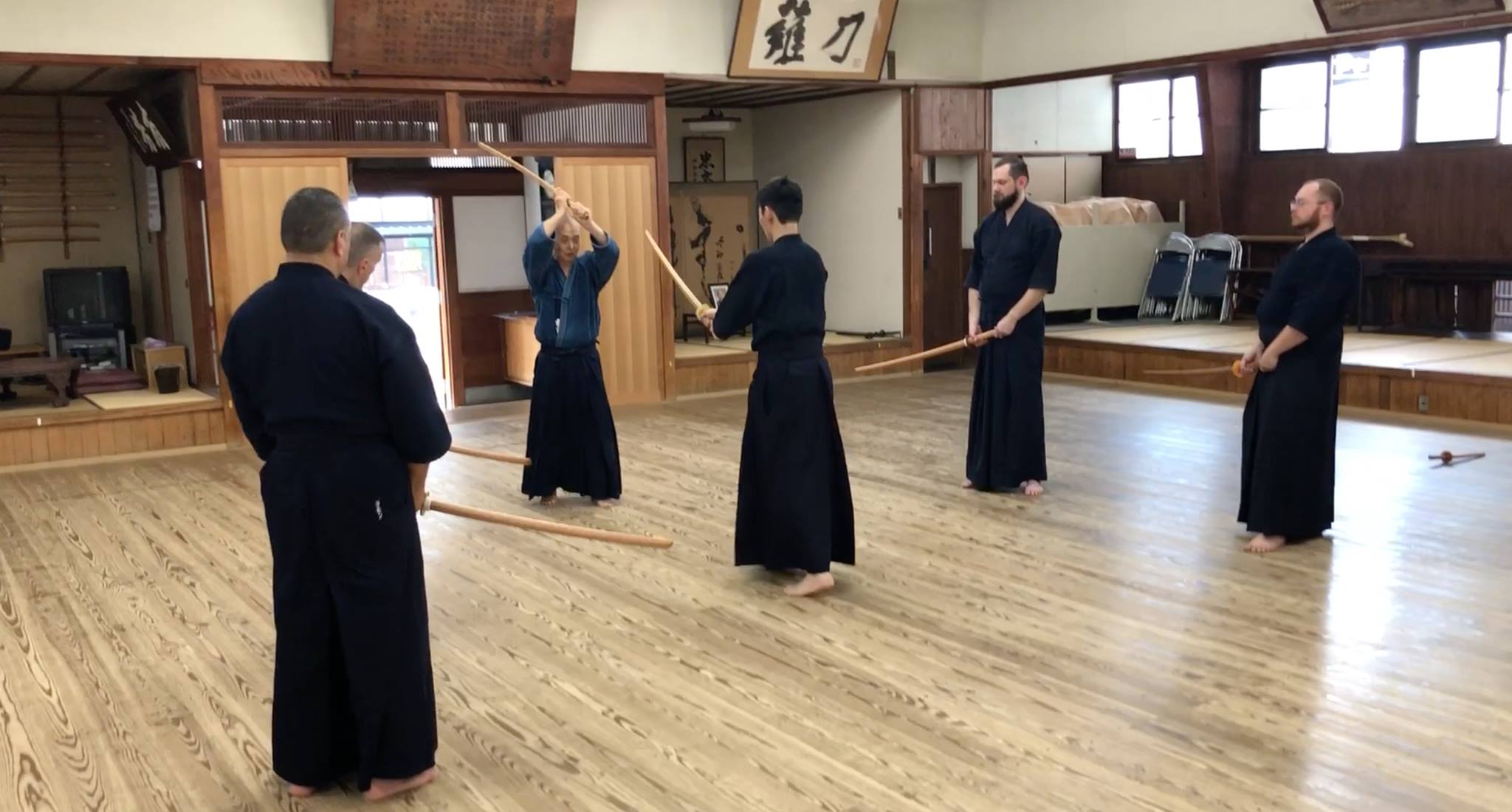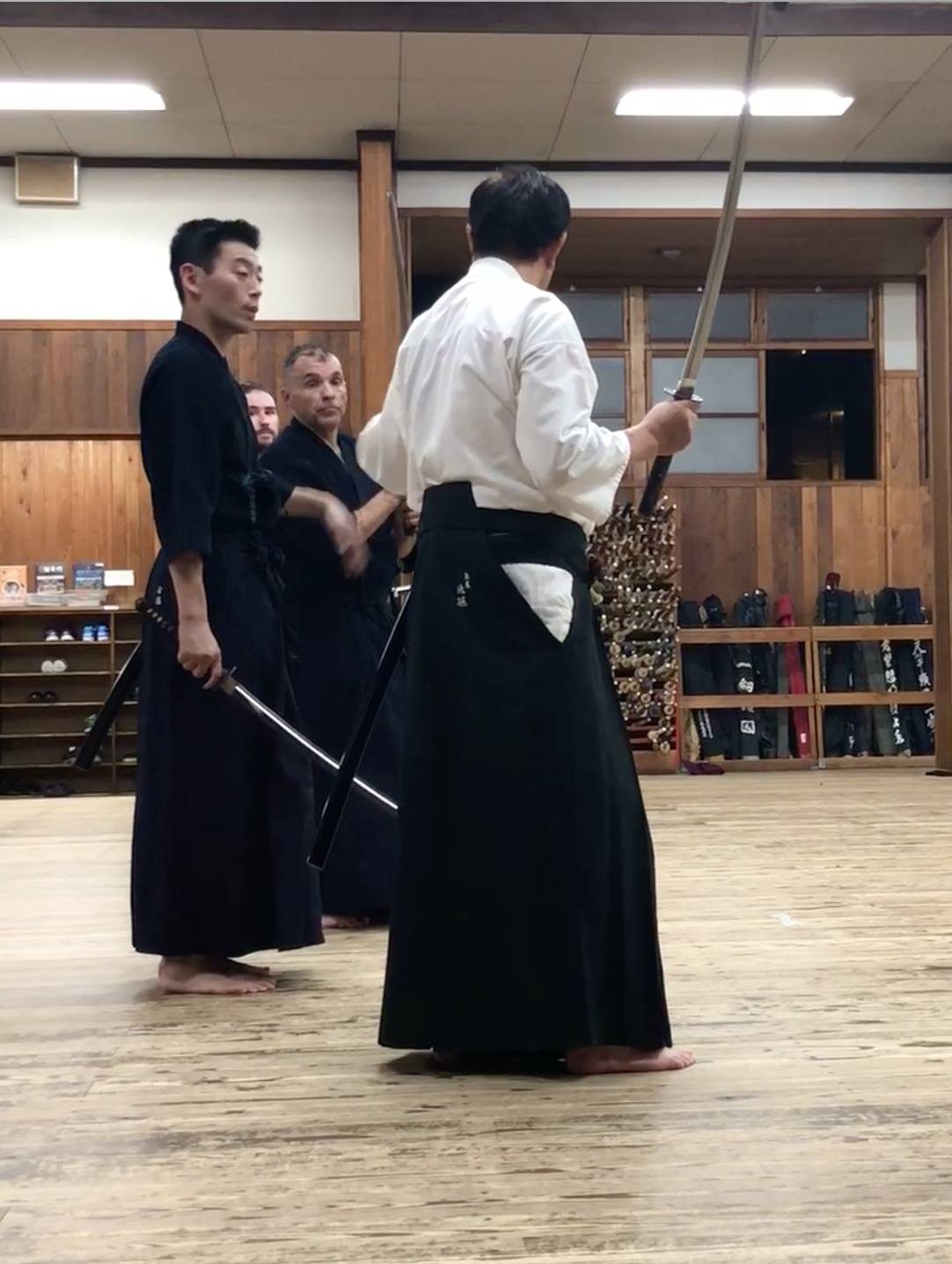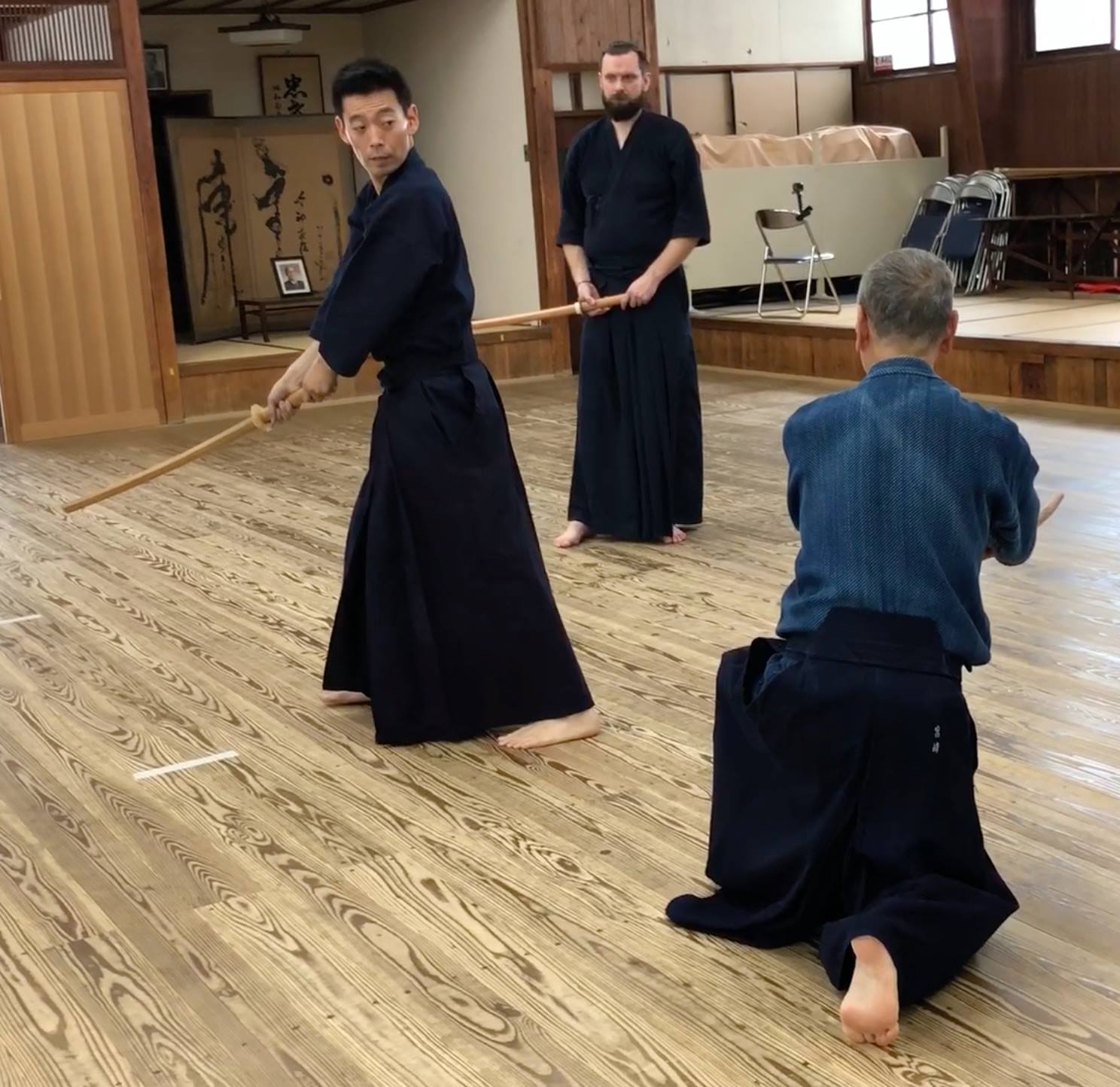You Got It!
Kata Benefits and Its Practical Usage for Kendo
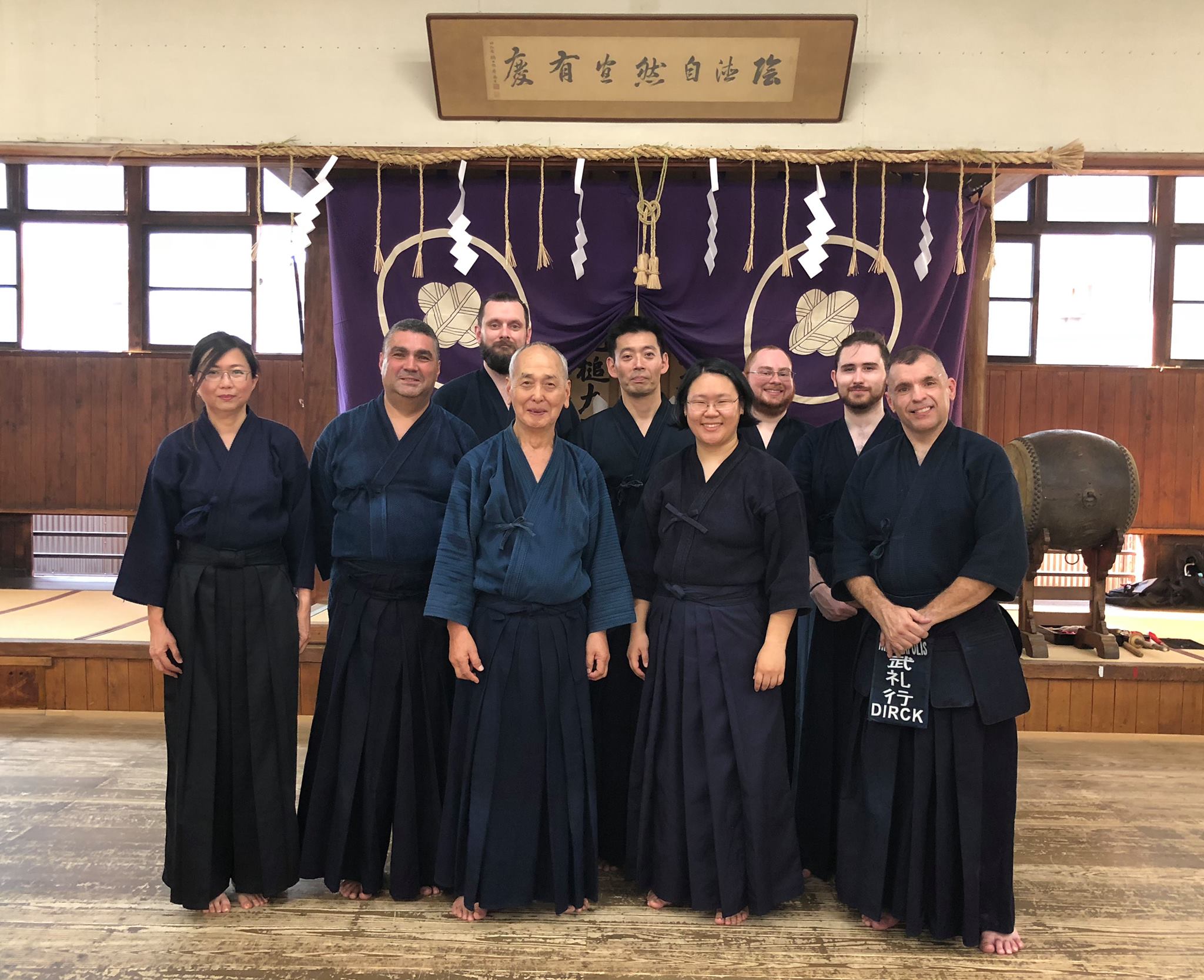 Kendo Japan Tour 2018 Group Photo at Shubukan
Kendo Japan Tour 2018 Group Photo at ShubukanWe planned and made it happen. We went to Japan to study kendo. Not just to do kendo at dōjōs in Japan. We asked my sensei, Miyazaki sensei, to train us.
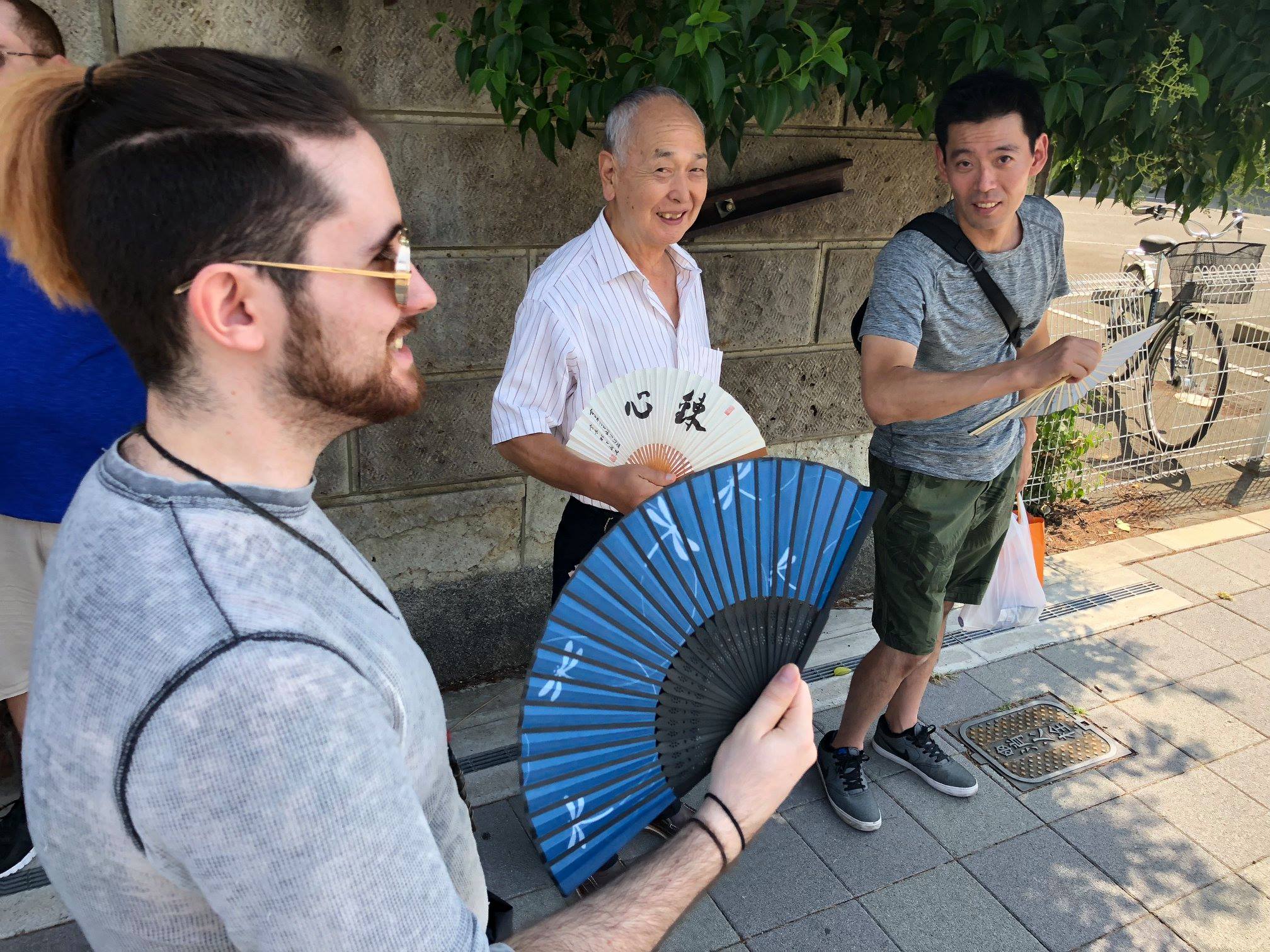 Lucky to Have Own Fan! Highest Temp 39.5℃ (103 ℉), Humidity 66%. Feels hotter on the busy road with cars around
Lucky to Have Own Fan! Highest Temp 39.5℃ (103 ℉), Humidity 66%. Feels hotter on the busy road with cars aroundOur first training was on August 4 (Sun). Oh, man! Oh, man! I was born in Japan and raised in Japan. I didn’t remember any summer that HOT! I knew the dōjō could get really hot but this time it felt like I was in a heat bubble. I could feel a layer of heat around me and wherever I went it followed me. No way out!
The first day was only 1 hour kata session because I messed up our arrival time in Japan. Anyway, for that 1 hour session, not only I but also other people found out how the training would be going to be at this dōjō...
We probably did keiko for about 4 or 5 hours in total with Miyazaki sensei. And of course, Miyazaki sensei planned to do some basic practice with bōgu on. But we couldn’t even put our dō on. That is how precise he looked at our kata. And I am so glad that he spent time on showing my students kata. We all know that kata is important but once we learn all the movements, we tend to go through motions.
I heard that in other martial arts they learn kata first. They emphasize kata in exams. They must pass kata first and then do free sparring to show what they can do. Since I’ve done only kendo in my life, I'm not sure if that is always the case but I know in other martial arts they have kata matches. Recently kata tournaments in kendo have been held at local level but it’s not very common. We definitely don’t have a national kata tournament in Japan.
We did all the 10 (7 with tachi, 3 with kodachi) kata but I will share things that we need to know for the entire kata.
Assume Proper Kamae
Kamae is the foundation of your kendo. Imagine a cannon. You fire a cannon. But its tube and other parts are broken into pieces because they are not solidly made. The cannonball
wouldn't go far or wouldn’t be fired as powerful as it could be. I think you know my point. Your kamae, the foundation of your kendo, needs to be well structured so you can execute your techniques as effectively as possible.
Also, you need to know why you are taking that kamae and how you should take such kamae. For example, in Kata No. 4 you take (migi) wakigamae with your sword behind you to hide your sword. If you are not hiding your sword then you don’t know why you are taking such kamae. And you must think how you should walk to keep the sword behind you. Without knowing the purpose of taking wakigamae, you are not learning anything from kata and not benefiting from it.
Learn Your Distance
In kata, people tend to swing their bokutō down into the air. They are so into striking others when they are in armour but in kata they suddenly don’t care if they reach their opponent or not. You are not supposed to hit your kata partner with a wooden sword, of course, but if you cannot even reach to your kata partner, what is the point of your partner even moving to execute a counter-attack?
If you are uchitachi, you need to aim the target you are supposed to strike. Not only aim but you really need to mean to strike the target. Of course, again, you should not actually hit your kata partner with your bokutō so you need to control the speed and power of your strike. This leads us to...
Working Together
Kata is a pair work. More importantly we need to remember that uchitachi is a teacher side and shitachi is a student side. That means shitahi is learning, studying and polishing up their skills through kata. So uchitachi, the teacher side, needs to execute proper techniques for shitachi so shitachi can learn proper techniques.
Uchitachi should not be a pitching machine. You know this machine is used to practice batting in baseball? You cannot be like that. You just don’t swing your sword up and down mechanically without thinking about timing, opportunities, distance and readiness of your kata partner. Uchitachi is there for shitachi to learn.
Yet, we all are still the students of kendo. We always have to focus on good strikes and think about our kata partners.
How to Use the Katana
Bokutō is an imitation of the katana. So in kata we are learning how to use the katana. In the concept of kendo by International Kendo Federation is to discipline the human character through the application of the principles of the katana (sword).
And also we have Zennihon Kendo Renmei Seitei Iai (iai forms established for kendo practitioners by All Japan Kendo Federation). If you have time you should learn. But if you don’t you should learn kendo kata thoroughly because kata was made for us to learn techniques of the katana.
We must think the monouchi when cutting. To do so, again, we need to know our distance so we can cut with the monouchi of the katana. And we need to hold the bokutō correctly and to deliver our body forward to cut down.
And also I understand that only way we can learn how to cut is actually to cut something like makiwara. But until you actually have a chance to cut one, you need to listen to your teacher and learn how to use the katana as properly as you can.
Learn How to Breathe in Kata
There are multiple ways to breathe during kata. One sensei says this, and the other sensei says that. So I will share what I learned on this trip.
Basically you do each kata with one breath. But it is very hard to do so, so here is what I learned.
“Breathe in when you assume a stance. Until you execute a technique hold your breath. Then breathe so quietly that your opponent cannot hear it. Hold your breath again when taking 5 steps backwards.”
When you fight, your heart beats rapidly and breathe quickly. Your shoulders go up and down. When you attack in such condition, you’re telling your opponent that you’re under stress and your body movements are easily predicted. It is the same in kendo. That’s why you need to hold your breath as you get close to your opponent.
Even if you are a beginner, I want you to remember this. You shouldn’t have a loud kiai when you get into your or your opponent’s striking distance. You are too vulnerable there if you breathe when you are close to your opponent. That is why we need to control ourselves by controlling our breathing.
Learn How to Shout the Kiai
“Yeah!”, “Toh!” Those are the kiai we shout in kata. But you don’t really want to just shout these “words”. You need to mean it. To do so, you need to exhale the breath you have been holding at once using your lower abs. Have you ever seen karate-ka breathing out when they do kata? Or my favorite analogy from Dragon Balls. You hold and concentrate the energy inside and release it at your opponent when you execute your technique.
Learn How to Move Your Body Properly
It is related to “Learn How to Use the katana”. So I want to tell you what I didn’t share in that section.
Many are so busy to do the “forms” and focus on the cutting part of the kata that they forget about their footwork. They don’t properly move their body using their footwork. They forget to use their footwork when they don’t have their bōgu on. With their men on, you know what would happen to them, don’t you?
Conclusion
Kata is a total package of everything you learn in kendo. It is not a part of exam criteria that you have to fulfil. By doing kata you can correct your kendo and learn practical aspects of kendo that I introduced here.
Practice kata on a regular basis. If you do it right, it will benefit you and your kendo. kata is left for us to study by these great kendoists. It’s the benefit and treasure for our kendo, and it’s our obligation to study it well.

